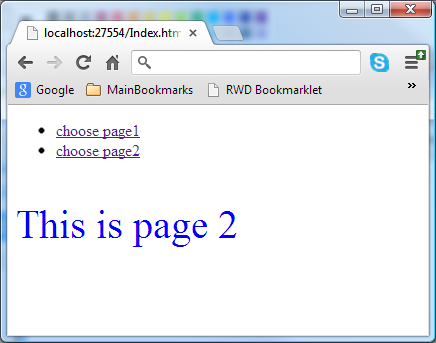Datatype Library Javascript Html5
Posted : admin On 26.10.2019
.The page consists of empty named divs. Rather than any particular content, the page consists of placeholders with IDs.It uses jQuery.
Create rich user experiences, animations, games and applications with bHive, a HTML 5 canvas framework API built to make developing easier, so you can start creating straight away. Paper.js is an open source vector graphics scripting framework that runs on top of the HTML5 Canvas. It offers a clean. The HTML5 specification calls for an input element which supports date and time input types. While this would be an excellent solution rather than needing to rely upon a Javascript library for the calendar picker (such as Editor's built in datetime field type), only Chrome and Edge currently support these input options. IE, Firefox and Safari.
The jQuery library is used to vastly simplify loading data through AJAX calls.All contents are in separate files. Look through the directory, and you can see very simple HTML files that contain small parts of the page. For example, story1.html looks like this: Book I - Creating the HTML FoundationSound HTML FoundationsIt's All About ValidationChoosing your ToolsManaging Information with Lists and TablesMaking Connections with LinksAdding ImagesCreating forms.The init method runs on document.ready. When the document is ready, the page runs the init method.The init method uses AJAX calls to dynamically load content. It’s nothing more than a series of jQuery load methods. This approach may seem like a lot of work, but it has some very interesting characteristics:.If you’re building a large site with several pages, you usually want to design the visual appearance once and reuse the same general template repeatedly.Also, you’ll probably have some elements that will be consistent over several pages.
Html5 Javascript Tutorial Pdf
You could simply create a default document and copy and paste it for each page, but this approach gets messy. What happens if you have created 100 pages according to a template and then need to change the header? You need to make the change on 100 different pages.The advantage of the template-style approach is code reuse.

Just like the use of an external style allows you to multiply a style sheet across hundreds of documents, designing a template without content allows you to store code snippets in smaller files and reuse them. All 100 pages point to the same menu file, so if you want to change the menu, change one file and everything changes with it.Here’s how you use this sort of approach.Create a single template for your entire site.Build basic HTML and CSS to manage the overall look and feel for your entire site. Don’t worry about content yet. Just build placeholders for all the components of your page. Be sure to give each element an ID and write the CSS to get things positioned as you want.Add jQuery support.Make a link to the jQuery library, and make a default init method.
Star wars battlefront 2 factions. Put in code to handle populating those parts of the page that will always be consistent.Duplicate the template.After you have a sense of how the template will work, make a copy for each page of your site.Customize each page by changing the init function.The only part of the template that changes is the init function. All your pages will be identical, except they have customized init functions that load different content.Load custom content into the divs with AJAX.Use the initfunction to load content into each div.This is a great way to manage content, but it isn’t quite a full-blown content-management system. Even AJAX can’t quite allow you to store content on the web. More complex content management systems also use databases rather than files to handle content. You’ll need some sort of server-side programming (like PHP) and usually a database (like mySQL) to handle this sort of work.